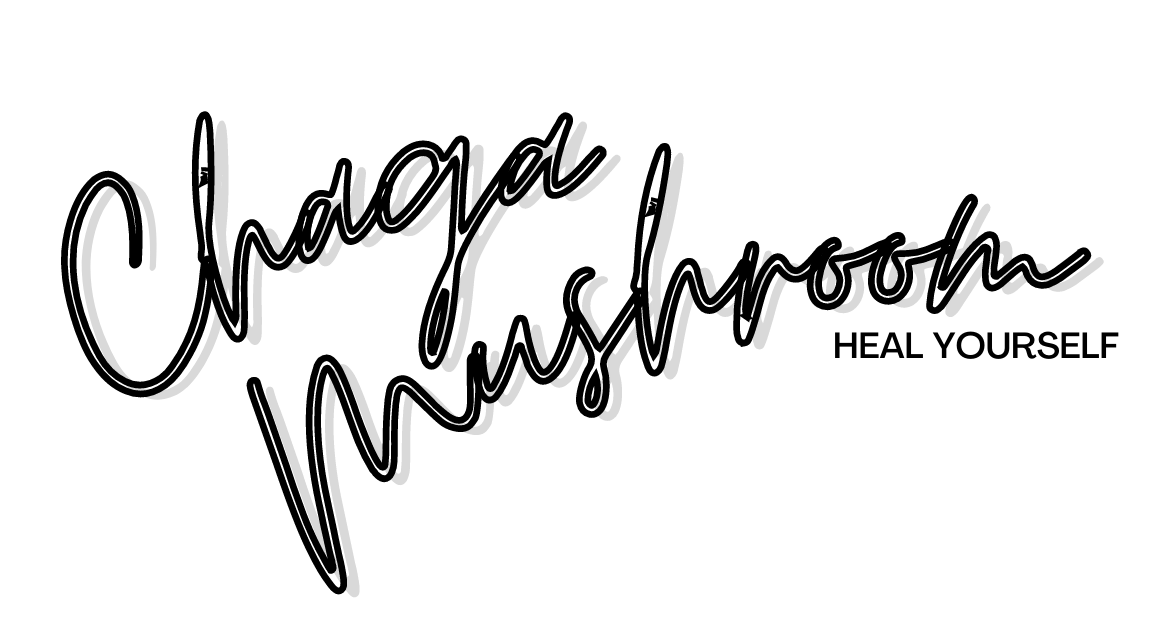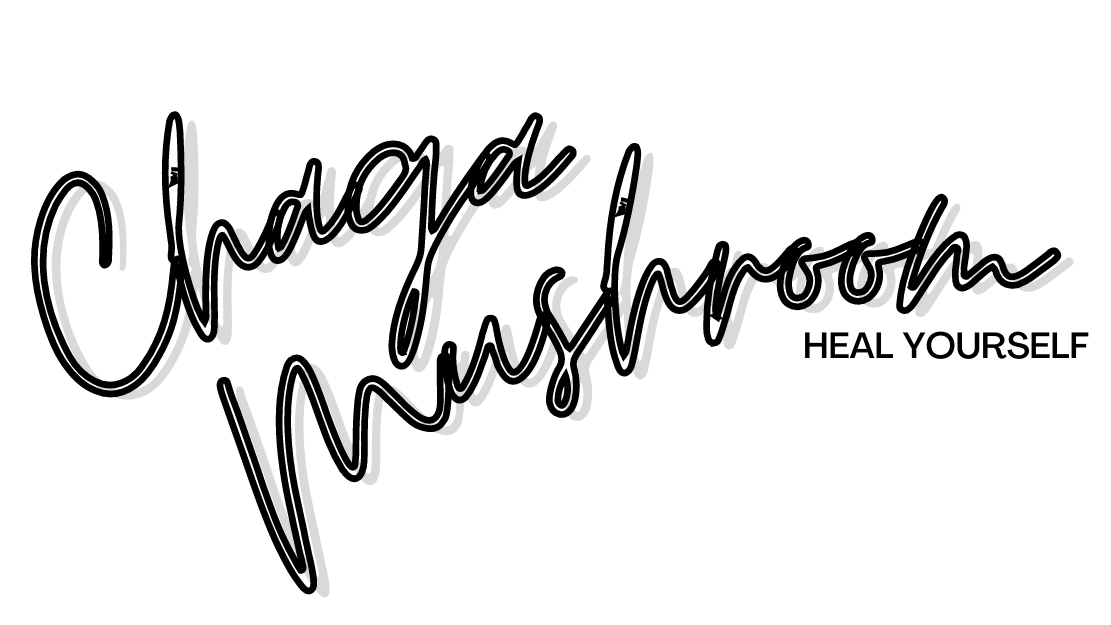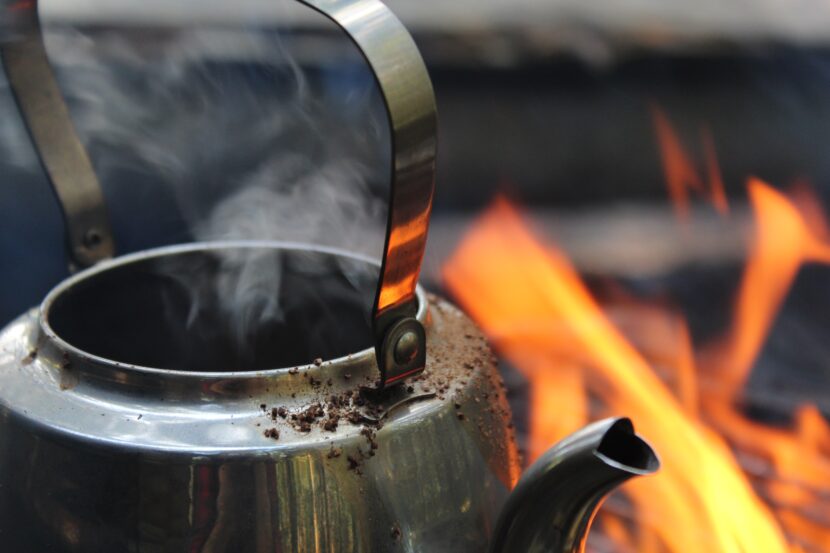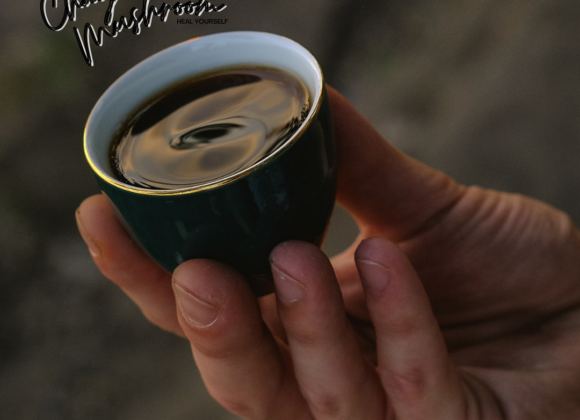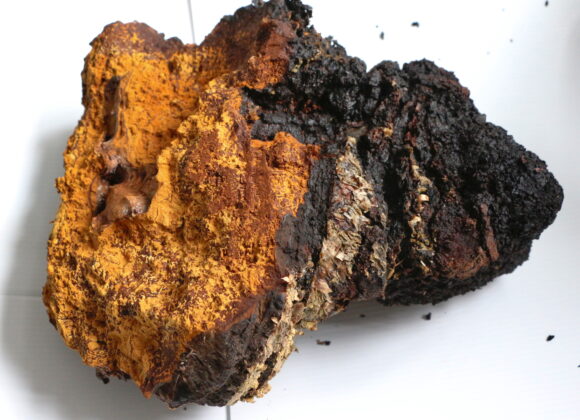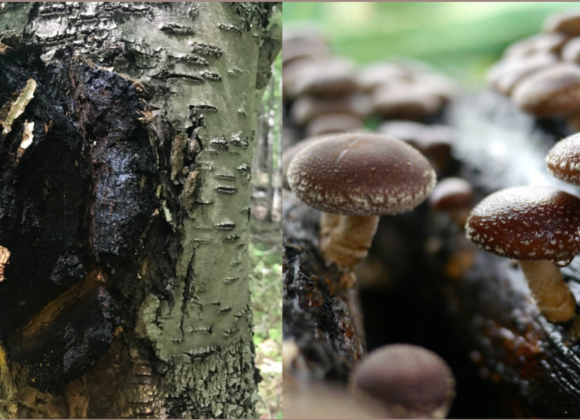Chaga won’t turn toxic when boiling, but it loses some of its nutrients. Yet heating expands the cell walls of the Inonotus obliquus, allowing more nutrients to become bioavailable and produce a stronger healing potion. So the key to a good Chaga tea is letting it simmer and steep over a longer period.
Chaga is both flavourful and has medicinal benefits. The flavor is somewhat earthy, with a slight bitterness and hints of a sweeter undertone. The mushroom is exceptionally high in antioxidants. It has even been claimed to have the highest amount of antioxidants of any food on Earth.
How long do you boil Chaga?
As mentioned before, it’s best to keep Chaga under boiling temperatures. If you’ve harvested the Chaga yourself, make sure you’ve let it dry before brewing. We recommend you experiment with the length of brewing to adjust it to your taste. The longer you let your tea simmer, the richer the color, flavor, and potency. Some people like to let their tea simmer over several days.
Our favourite way to prepare the tea is using around 15 grams of chaga nuggets in 1 litre of water. Letting it simmer between 50-80 degrees Celsius, for 4 to 5 hours for a beautiful colour and taste. It’s best to keep the temperature low, to ensure keeping alive benefits of the fungi.
For easier preparation, use Chaga chunks instead of powder. First, preparing the powder at home can turn out to be dangerous. We have heard stories of Chaga lighting on fire in a coffee grinder, as it easily catches sparks.
Fun fact, Chaga has been used as a coal extender for ages, as the inner part of Chaga can stay lit for days!
How many times to boil Chaga?
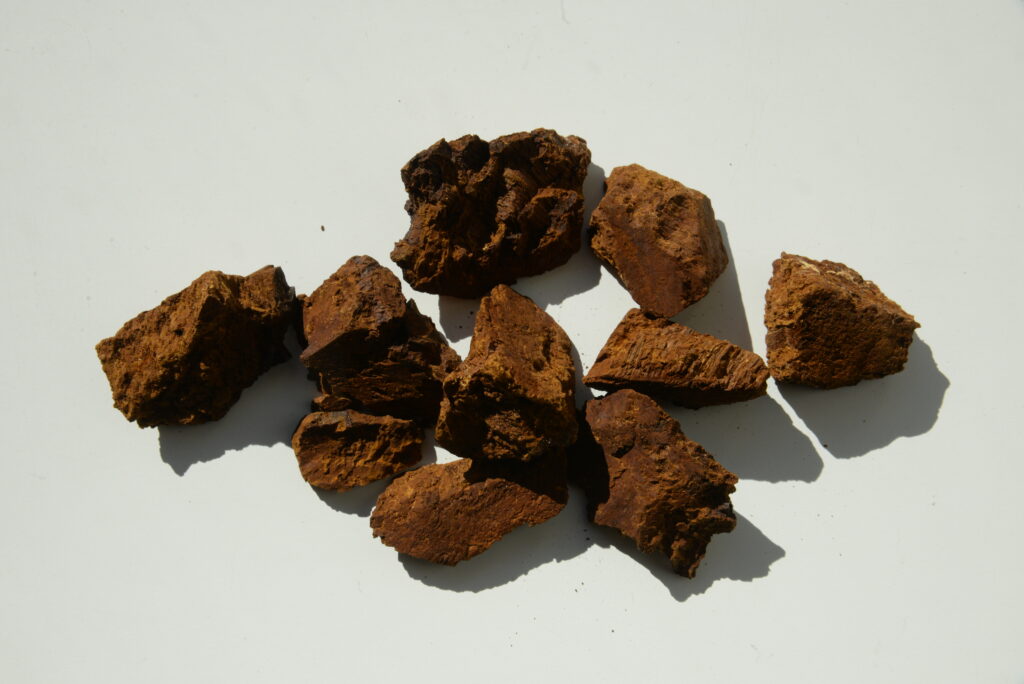
Chaga nuggets can be reused five times. Avoid letting the water boil while the fungus is in it. When you finish brewing a batch of tea, strain out the Chaga chunks and set the nuggets on the side to dry. Once they’re all dried up, store the pieces in a cool, dry, and dark place.
Should you use the black part of Chaga?
You absolutely should! The black outer part of Chaga, known as a sclerotium, turns out to have a very high concentration of the pigment melanin, making fungi such a powerful antioxidant. Melanin helps to protect the skin against oxidative stress that can lead to signs of aging. These antioxidant properties help to shield and support your cells from harmful free radicals.
Free radicals cause many chronic health problems, like cardiovascular and inflammatory diseases and cancer. Antioxidants like Chaga prevent free radical-induced damage to the tissue by preventing the formation of radicals, scavenging them, or aiding their decomposition.
Does Chaga go bad?
Homemade preparations like tea should be stored in a refrigerator for 14 days. Chaga tinctures are the best for long-term use; their shelf life is around two years.
The biggest problem with harvested Chaga is mold. There are two most prevalent types, of which the more common is a white mold on the Sclerotium – black outer layer and a greenish-blue mold in the inner layer. Both develop with improper processing and storage. Once again, when your Chaga is dry, you want to store it in a cool, dry place away from direct sunlight (it’ll easily bleach in direct sun).
Drying Chaga is simple, don’t let the temperature exceed 50 degrees Celsius. You can either use a dehydrator; dry them in an oven, keeping the oven door open for airflow; find a dry spot close to a heater or a wood burner, and set the Chaga to dry safely. Experiment with the tools available for you. The drying process will usually take around a few days. A tip for testing the moisture level is to touch some to your lip. When stored properly, dried Chaga can last for years.
How often to consume Chaga?
Generally speaking, a cup or two of Chaga tea daily boosts your health. When dealing with a serious health concern, we’ve heard people drinking up to six cups of tea daily.
Unfortunately, you won’t feel any immediate effects from consuming Chaga. The benefits accumulate over time, with long-term use. So it’s best to habitually incorporate the superfood into your diet through various products and recipes.
Key takeaways from boiling Chaga
Chaga mushroom is a living organism; heating expands the fungi’s cell walls, allowing more nutrients to become bioavailable for human consumption and produce a stronger healing potion. For the easiest use, we recommend using Chaga chunks, whether store-bought or harvested and dried yourself. When removing the remaining bark from the mushroom, leave the black of Chaga. This is where the melanin hides, and your antioxidants come from!
Let your tea simmer over a longer period, from 5 hours to days, at around 50 degrees Celsius for an optimal brew. Find out which potency and flavor suit you best by giving it a taste from time to time.
Dry and reuse your Chaga nuggets five times before throwing them away. Serve the tea hot or let it cool down, store it in a fridge, and drink it over ice within a few weeks. We have dedicated time and love to creating simple Chaga recipes and ways to spice up your tea!
